Main Highlights of Thingvellir Park
The main highlight of this Icelandic national park is its geological features. However, you don’t need to be a scientist or archaeologist to appreciate it. You can learn about Icelandic customs and ancient history while enjoying the park’s sensational landscapes.
Icelandic Rift of Silfra
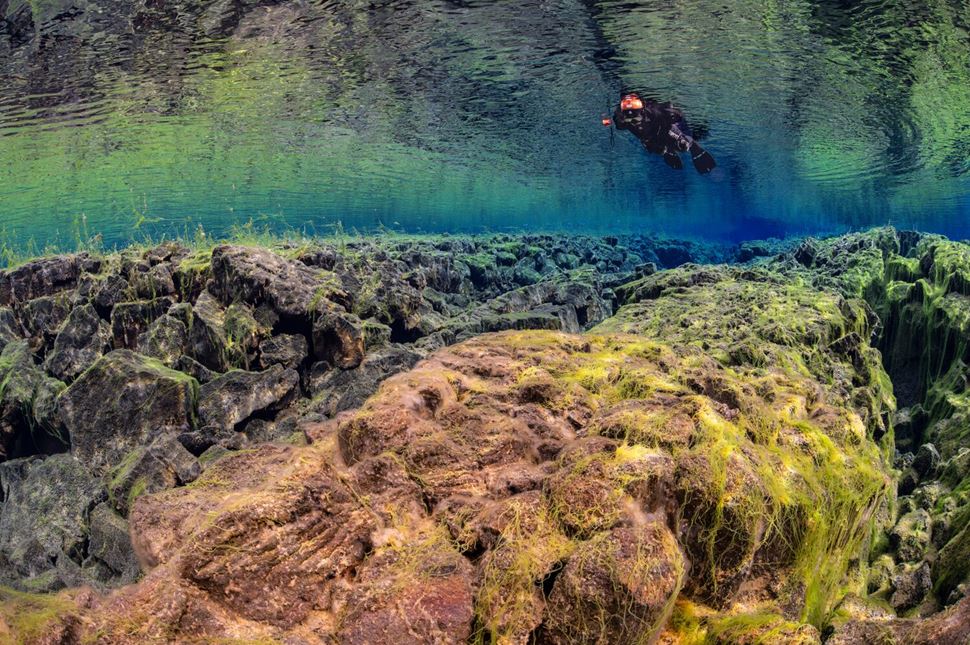
Underwater view of Silfra Fissure, where crystal-clear waters reveal the divide between two tectonic plates. Source: Arctic Adventures
Silfra is a fissure or crack created by earthquakes caused by the movement of the North American and Eurasian plates. Formed in 1789, its clear glacier water is supplied by the nearby Langjökull.
It takes years for the glacial meltwater to filter out and come out from the spring under the formation. This is why the Rift is one of the world’s best diving and snorkeling spots.
Due to its location, people can view the tectonic rift underwater. The water never freezes, so divers and snorkelers can enjoy the sight year-round.
Öxarárfoss Waterfall

Öxarárfoss Waterfall tumbling over rocks in Þingvellir National Park.
The impressive waterfall flows off the edge of Almannagjá Gorge and creates a cascade that is 44 feet (13 meters) tall. It is located in the National Park and is easily accessible via the main hiking trail.
The Öxarárfoss waterfall is fed by the Öxará River, which originates from the nearby Þingvallavatn Lake. It also was a gathering place for early Icelandic settlers during the Alþingi, the country’s first parliament. Its stunning scenery is even featured in the Game of Thrones series.
Almannagja Gorge
The Path of Thingvellir Rift Valley - Almannagja is a gorge like no other in the world. Formed thousands of years ago, continental plates surround it on both sides. Due to their movement, it grows yearly. Stretching 4.9 miles (8 kilometers), it’s one of the most visited parts of the National Park. Walking through this rift feels like exploring the depths of Earth itself. You’ll have to pass through it to get to other significant sights.
Lögberg (The Law Rock)
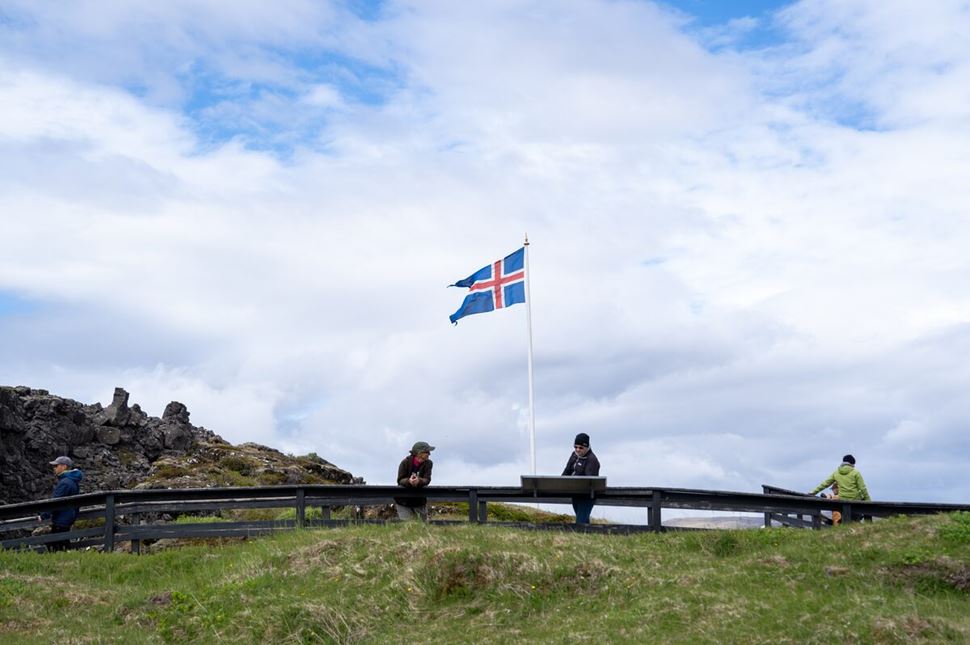
The Alþing site is where Iceland’s first parliament was established. Source: Arctic Adventures.
Lögberg (The Law Rock) is marked by a flag and served as the heart of the Alþing, Iceland's national assembly, from 930 to 1262. The Law Speaker, or Chief Goði, stood here to proclaim the law. Lawmakers had to stand on this rock to raise important questions, report news, and confirm the calendar. Elected by the Lögrétta (Legislative Assembly) for a three-year term, the Law Speaker was the only paid official. You can stand in the spot where history was made and have a magical photo opportunity!
Thingvellir Church
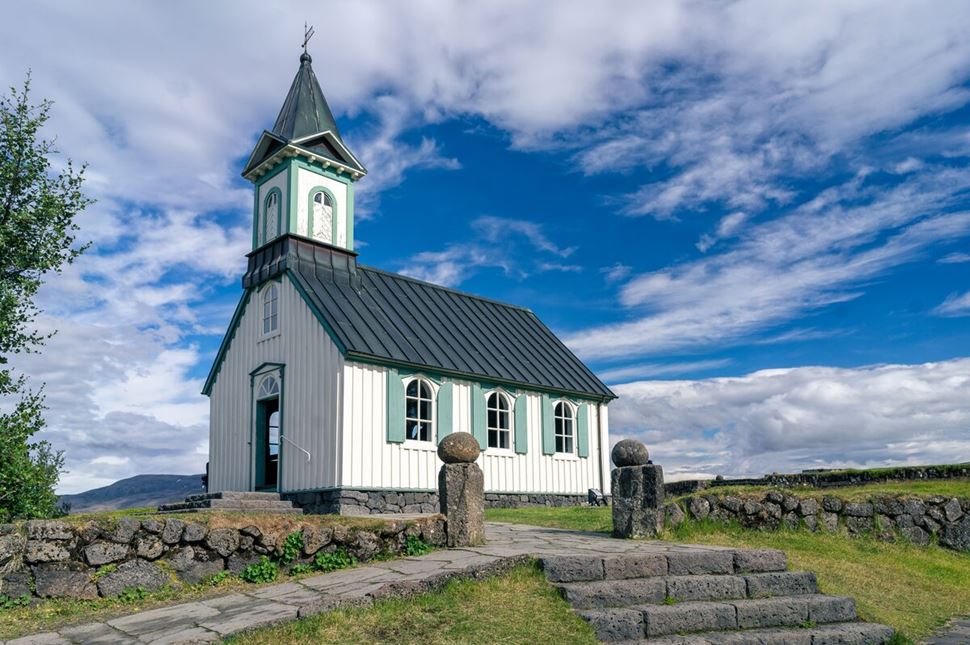
Þingvallakirkja church is located on the national park’s walking path.
As Iceland saw more settlers come to its shores, Christianity slowly started to sip into the island. In 1000 A.D., it was eventually declared the official religion. For this reason, Thingvellir Church was built in the 11th century. Today, you can step back into history and tour the church yourself. It is one of the oldest buildings in Iceland (older than the National Park status of þingvellir).
Lake Thingvellir
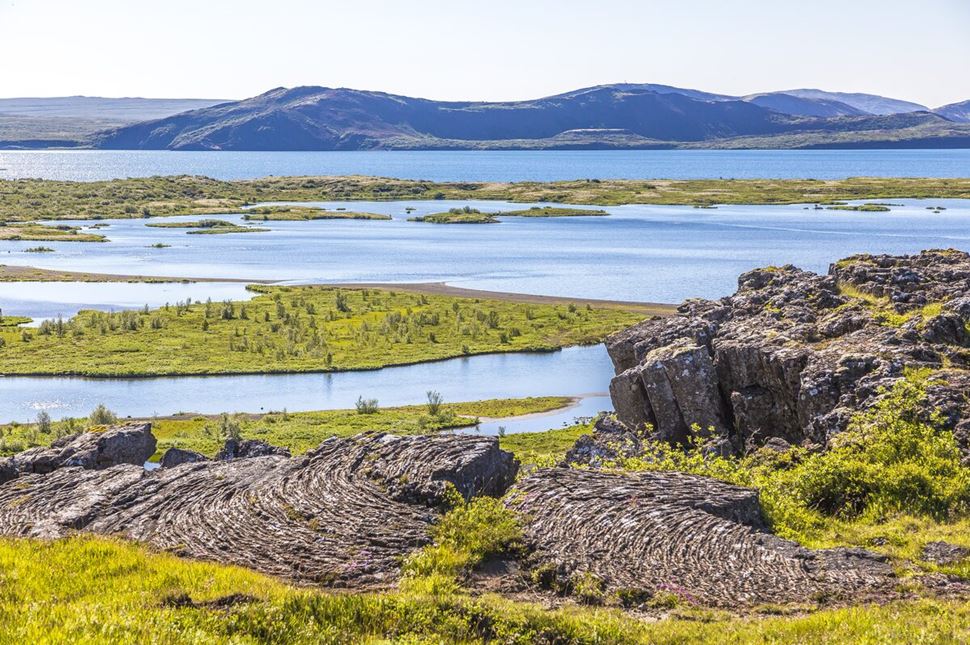
Þingvallavatn is the largest natural lake in Iceland.
Lake Þingvellir is a unique place because it is cut off from other water sources, allowing the marine life to evolve on its own. Despite the cold temperatures, the lake is very fertile and has a lot of plant life. One-third of the bottom is covered in vegetation and plenty of algae.
You can explore the area around the lake on foot. In the summer, you can buy a fishing license to catch ice-age brown trout, for which the lake is famous. The water doesn’t freeze and stays around 37.4 and 41 °F (3 to 4°C).
Drekkingarhylur Pool
Drekkingarhylur is a beautiful pond situated near the Öxará River. It's a picturesque view with a gruesome history behind it. Known as the Drowning Pool, from the 16th century till 1739, it was a spot of multiple drownings of women. They were executed for various crimes, like adultery and even perjury.
Today, Drekkingarhylur is a landmark known for its beauty. Due to its history, we suggest not swimming in the water. Instead, enjoy the quiet atmosphere that surrounds the area.
Peningagjá Pond
The Peningagjá pond is part of the larger crack. It is nicknamed the "Money Fault" because people have been throwing coins into it from the bridge above it for many years. You can see the metal reflected in the clear glacial water. While the authorities have banned coin tossing, no one is stopping you from enjoying the panoramic views from the Coin Fissure. A few steps away, you'll find Thingvellir Church.
Thingvellir National Park in Winter
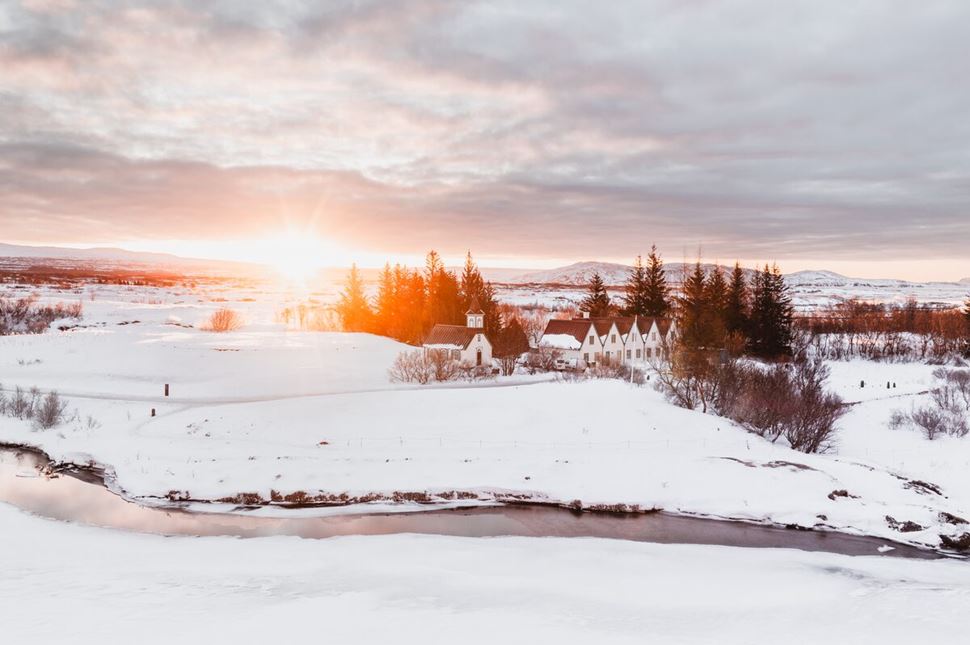
Thingvellir is a popular destination even in winter. Source: Arctic Adventures
Þingvellir National Park remains open and accessible throughout the winter. Most visitors can use a standard rental car with winter tires to reach the park. However, for better safety and comfort, a 4WD vehicle is recommended. Additionally, only the main walking trail has daily maintenance during winter.
Despite the cold, tourists still come to this unique continental divide. The park is near Reykjavík but far enough to make it an ideal spot for viewing the Northern Lights. If conditions are right, you’ll be treated to a colorful dance of aurora right between the tectonic plates. It's a magical experience!
Accommodation and Hotels near Thingvellir National Park
The area around the park offers several accommodation options. If camping is not your style, you can always stay at hotels, hostels, and a variety of cabins.
Hotels
- ION Adventure Hotel at Nesjavellir
- Borealis Hotel
- Hotel Grímsborgir
- Héradsskólinn Historic Guesthouse
Hostels
- Hostel Úlfljótsvatn
- Ljósafossskóli Hostel
- Laugarvatn Hi Hostel
Cabins and Cottages
- Thingvellir Lake Cottage
- Minniborgir Cottages and Restaurant
- Eyvindartunga Farm Cottage
- Austurey Cottages





















